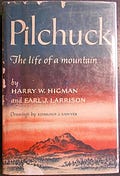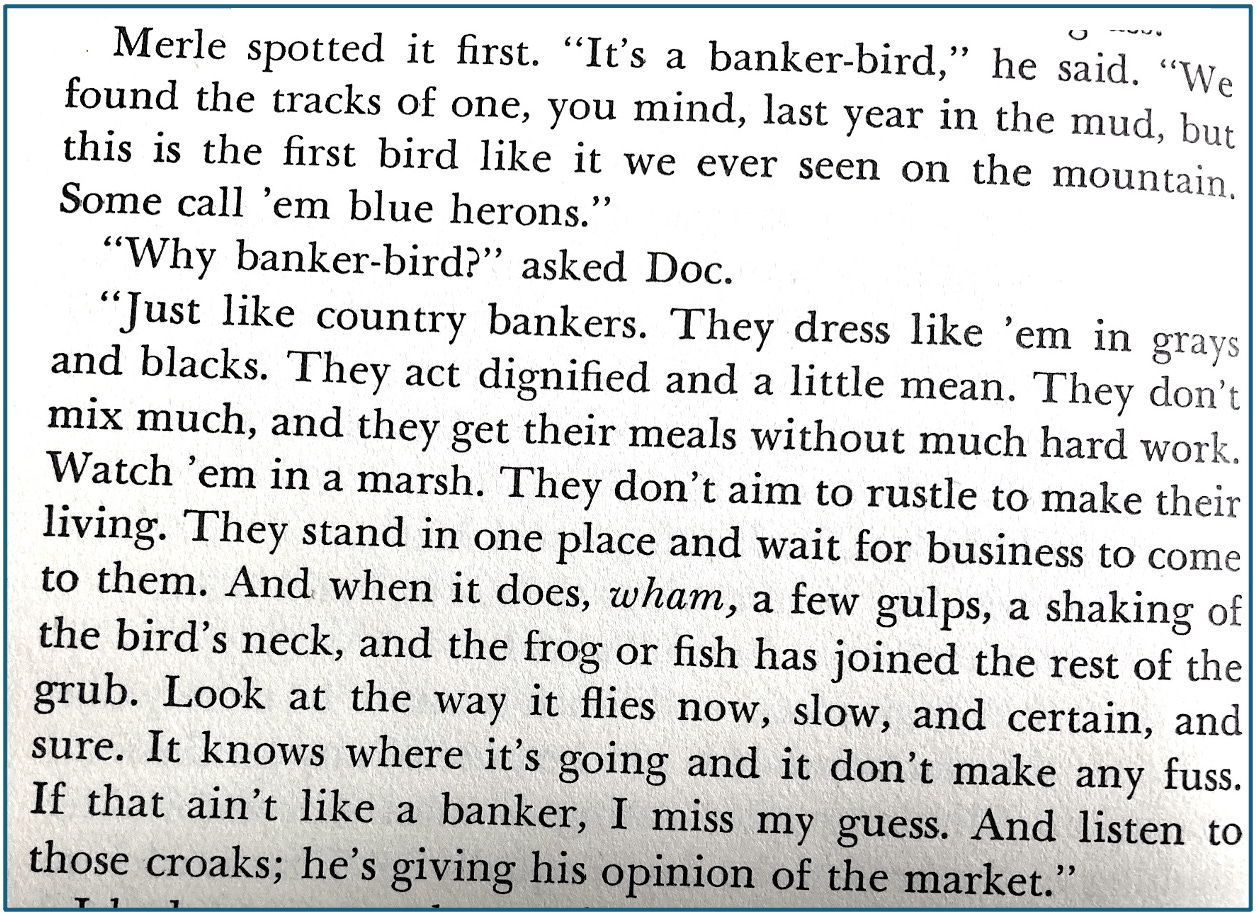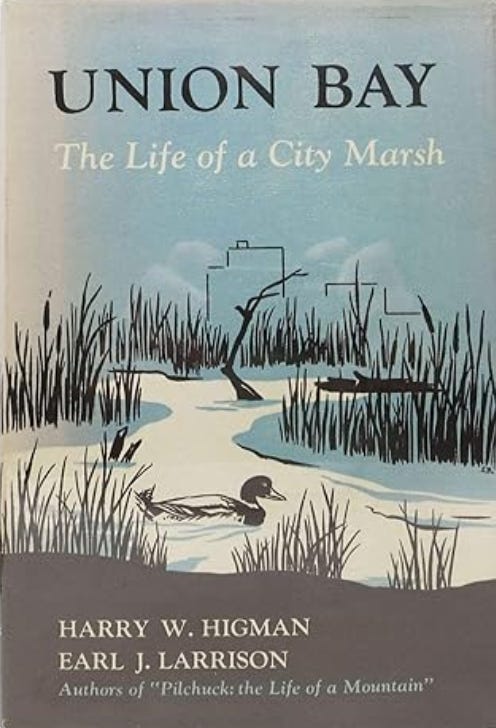As regular readers might surmise, I have long been a fan of books. They are so often filled with nifty and unusual facts and observations and insights! By Jove, they simply compel me to read more and more. For instance, I recently read a fine, long-out-print book, Pilchuck: The Life of a Mountain (1949) by Harry Higman and Earl Larrison. Both men were accomplished and well-regarded naturalists. Higman was more of a plant guy and Larrison, a birder and mammalogist. Higman was also a photographer.
They wrote the book as a novel with one character, Doc, based on Larrison, and the narrator, Frank, on Higman. It also includes Merle, a horse packer, cook, hunter, and man-of-the-woods. Taking the novelist’s approach, the authors tell of a series of explorations onto Mt. Pilchuck (about 20 miles east of Everett), highlighting the flora and fauna, geology, weather, and human history. It’s not exactly a page turner but is an engaging way to address the nature and culture of a place. (Don’t miss the bits about the birds and bees and some nature in tooth and claw.)
But this newsletter is less about the book and more about some of the things I learned. One of my favorites was about the black swift, a bird I had never heard of. Doc tells us that the first specimen of these “flying thunderbolts” was collected (in 1857) about 80 miles to the northwest of Pilchuck in Semiahmoo Bay and that no one has ever found a black swift’s nest in the state. Doc then speaks of ornithologist Samuel Rathbun, who had seen the birds in Seattle and the Cascades since the 1890s, and had searched nestlessly for decades. As of my writing this newsletter, black swifts are still nestless in Seattle and everywhere else in the state, at least to we two-legged observers. So wonderful to know of a bird who still contains mysteries.
And, as befits my long interest in names, I was taken by two provided by Merle. He refers to juncos as “refrigerator birds” because they are so “often engaged in picking chilled insects off snowfields.” As someone who more often encounters them in our backyard, where they are rather mischievous, I don’t normally think of them as birds of cold locales though I have seen them on Mt. Pilchuck.
My favorite name though goes to Great Blue Herons. Merle’s reasoning for why he calls them banker-birds is quite wonderful, though not necessarily flattering of bankers.
Merle also twice makes a trenchant observation that sort of contradicts my opening paragraph; you cannot always trust what you read in books. The first is in reference to the singing of thrushes and the second to where toads live. In both situations, the animals are doing things that the experts say should not or do not happen. “It sure is strange…It almost makes me think that nobody has ever read the rules in the toad books to them,” opines Merle. This reminds me of a statement I once read in a Barry Lopez book (though I cannot find it in any book of his). Lopez was quoting a biologist who said something along the lines of: “When I first started studying mountain lions, I thought I knew all I could about them after a few years but as I studied them more I realized I knew just a bit about the particular individual lions I had worked with.” In other words, we know so little about the natural world except that the lives of plants and animals are far more complicated than we give them credit for. Yet, another reason to pay attention to the wildlife around us; we can always learn something new.
Inspired by the book, and the wonderful description of the fire lookout and views from the summit, I hiked up Mt. Pilchuck a few weeks ago with a friend. Apparently the weather hadn’t read the weather reports because they said that it would start clearing by mid-morning and we had mizzle, drizzle, and fog the entire hike, including at the old lookout, where we at least found protection from the wind as we ate our peanut butter and jelly sandwiches, arguably one of the greatest foods ever! The view was one of the classics of the PNW, gray above, below, and all around us but I cannot complain, for, like many people, I have often found that the hike is just as good as the destination.
Hickman and Larrison also wrote Union Bay: The Life of a City Marsh. Like their previous book, this one is a fictionalized account, written to “give a picture of this small but complex and fascinating area.”
The Bottom Line - My new section on additional thoughts not necessarily related to the subject matter of the newsletter.
Thanks to all for your comments and support last week. Your kind words about my newsletter were, are, and will be truly uplifting and inspiring. In the days following the election, I have been thinking and talking with friends deeply about what happened and it seems to me that the best way forward is to focus on the future and not to dwell in the past and the reasons so many voted for him. I could spend my energy debating the campaign, the mistakes, the message, the lies, and the narrow mindedness and short-sightedness of voters, which I know can be valuable and important for many and which is enticing on some level, but doesn’t feel productive or pro-active for me and how I process and address the challenges of the next president.
What does feel energizing and positive, and I hope sustainable, is to honor what I believe in—fairness, respect, integrity, equity, honesty, clean air, clean water, healthy ecosystems, family, friends, community—and to work with, align with, and support those fighting for the same things. It will take a village, with many people taking on different tasks in the ways that work best for them, to address the issues we face. We are in this together.
“To be hopeful in bad times is not just foolishly romantic. It is based on the fact that human history is a history not only of cruelty, but also of compassion, sacrifice, courage, kindness.
What we choose to emphasize in this complex history will determine our lives. If we see only the worst, it destroys our capacity to do something. If we remember those times and places—and there are so many—where people have behaved magnificently, this gives us the energy to act, and at least the possibility of sending this spinning top of a world in a different direction.
And if we do act, in however small a way, we don’t have to wait for some grand utopian future. The future is an infinite succession of presents, and to live now as we think human beings should live, in defiance of all that is bad around us, is itself a marvelous victory.”
You Can’t be Neutral on a Moving Train by Howard Zinn







First and perhaps foremost, peanut butter and jelly is one of the greatest foods ever. Amen to that. Second, the Howard Zinn quote is maybe one of the best things I've read all week. My own thoughts about the election revolve around the idea that I cannot control any of it, but I can control my own actions going forward. I will strive to be kind and, as you said, align myself with and support those who are fighting for the world we want it to be. We are in this together.
Delightful post. I mirror your passion for reading and have a library of many out of print outdoor, natural history, and mountaineering tomes. We will emerge from this moment in history with a stronger and more determined community that addresses the environmental and social challenges that is the "Great" part of MAGA. We are fortunate to live in Washington State where we swaddled in nature, mountains, water, and wilderness. Thank you for being our eyes into this magical world around us.